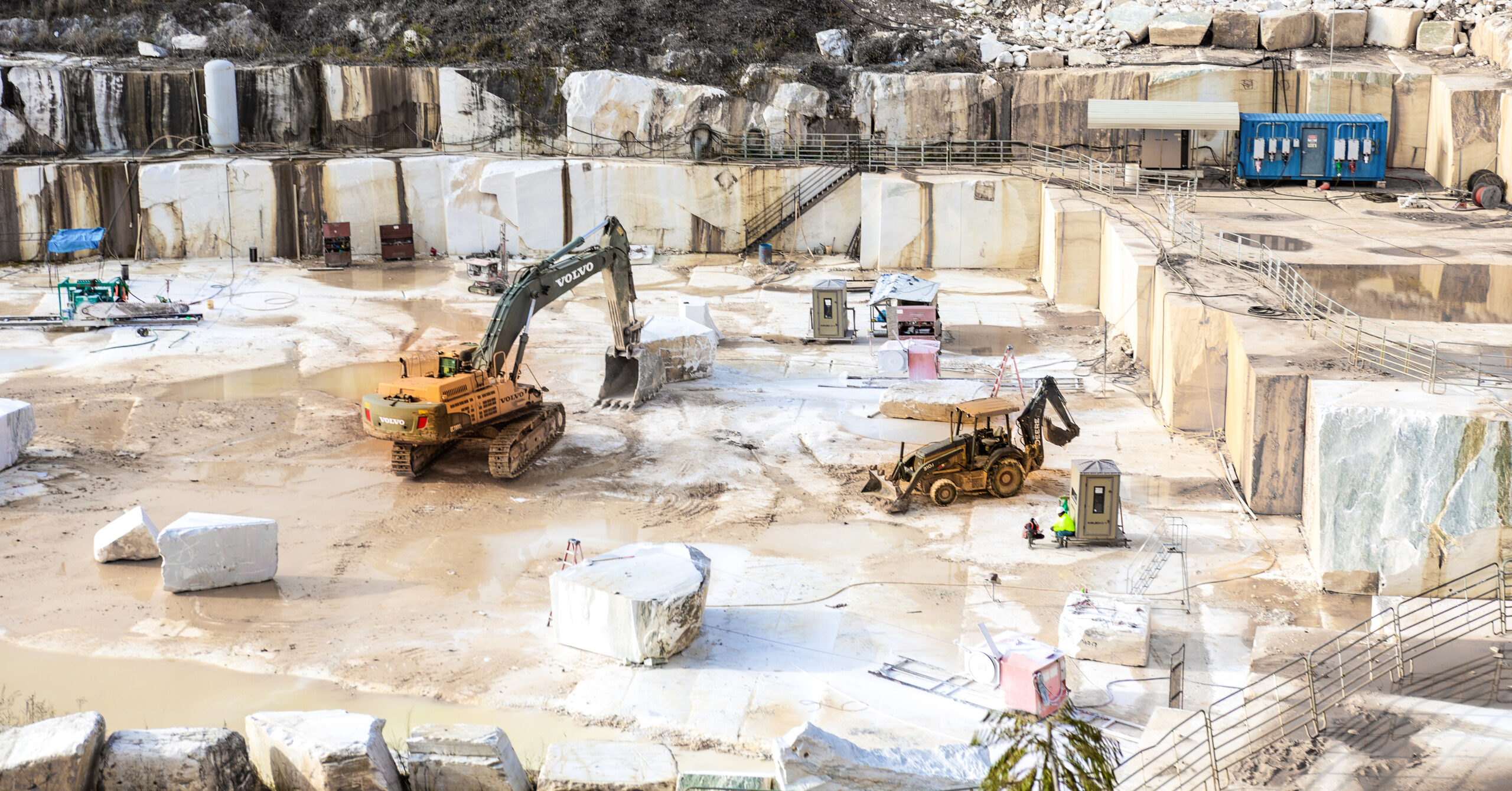Author Beth Cunningham – December 21, 2020

Want to see it for yourself? Make plans to attend the Sylacauga Marble Festival in the spring. Photo via Jacob Blankenship for Bham Now
Some of the finest marble in the world is found right here in Alabama—in fact, it’s just an hour from Birmingham. We got an inside look at the process from start to finish, and now we’re taking you with us. Tag along on a behind-the-scenes look with the experts at AM3 Stone.
What is Alabama Marble?

No two cuts are alike. Photo via Beth Cunningham for Bham Now
Alabama Marble is recognized as the official state rock of Alabama, and for good reason—the longest deposit of marble in the world is located in Sylacauga.
Even if you know the product, there’s a ton of history and cool facts you may not have heard. Check out five things you never knew about Alabama Marble here.
AM3 Stone, headquartered right here in Birmingham, is the exclusive purveyor of Alabama Marble.
If you’re looking to bring a gorgeous, timeless piece of Alabama into your home, contact them today!
The Process At A Glance

This stunning product elevates any style to the next level. Photo via Beth Cunningham for Bham Now
Getting the marble from the ground to your kitchen is as easy as 1-2-3. Here’s an overview of how the process works:
- The marble is cut out in massive blocks from the quarry in Sylacauga.
- It’s shipped to the processing facility in Bessemer.
- The marble is cleaned, cut and prepared for all kinds of different uses—both residential and commercial.
Of course, a whole lot of people and machinery are involved in making that process happen. We went to check it out for ourselves, thanks to the marble pros at AM3 Stone.

- Address: 301 21st Street N. Bessemer, AL
- Contact: Phone | Email
- Social: Facebook | Instagram | Pinterest
- Website
Step 1: The Quarry

The whitest marble in the world. Photos via Jacob Blankenship for Bham Now
The massive deposit of gorgeous white marble at the AM3 Stone quarry runs about 32 miles long, a mile and a half wide and more than 600 feet deep.
First, quarry workers drill holes according to their specific measurements. After that, they cut sections using diamond-coated wire. Yup, you read that right—AM3 Stone uses diamonds in their quarrying equipment because it’s one of the only materials hard enough to cut through marble.
Once cut, the blocks of marble are loaded up and shipped whole to the processing facility in Bessemer.
Step 2: The Processing Plant



All the machinery that AM3 Stone uses is developed in Italy, historically one of the top marble producers in the world. Photos via Beth Cunningham for Bham Now
Once it arrives at the processing plant in Bessemer, the blocks of marble are cut into slabs by one of two methods: diamond-coated wire or diamond-embedded blades.
After the slabs are cut, they’re perfected through a few different tools. Different polishes create the various finish options AM3 Stone offers on their products.

With five different collections, there’s a style for everyone. Photos via Beth Cunningham for Bham Now
Finally, edges are smoothed by hand, and any fissures are reinforced by an epoxy resin.
It takes a whole lot of water to clean the marble through every step of this process, as you might imagine. AM3 Stone has their own water recycling system at the processing plant, which allows them to clean and reuse 98% of their water.
Step 3: Your Home



Whether it’s a kitchen, a bathroom or a fireplace, Alabama Marble makes it stunning. Photos via AM3 Stone
The final stop for Alabama Marble is our favorite one: homes, business, national monuments and more.
One of the coolest things I learned while touring is that when people purchase countertops with AM3 Stone, they can go view the slabs in person at the facility.
Whether it’s being used for countertops, tiles, floors or anything else, the last step at the facility is cutting the marble to a customer’s specific needs. No two cuts of Alabama Marble are the same, but it all has one thing in common: it’s classic, resilient and timeless.
This article originally appeared on Bham Now.
